Hanzi Alive!(5)
Chinese characters use the simplest strokes to tell the grandest stories. "小" is as small as a grain of sand, "大" is a person with arms wide open, "夫" stands tall like a man, and "天" envelops all under the sky. These four characters hold the Chinese people's pure understanding of the world.
小(xiǎo)
Explanation:
The character "小" originally had three small dots, meaning "a little bit." Over time, it evolved into one straight line with a dot on each side, with some believing the line represents cutting something into small pieces.

Example:
Speak softly.
你小声点。
Nǐ xiǎo shēng diǎn.
The little bird is flying.
小鸟在飞翔。
Xiǎo niǎo zài fēi xiáng.
Her suitcase is very small.
她的箱子很小。
Tā de xiāng zi hěn xiǎo.
Find and circle the "小" in the image:
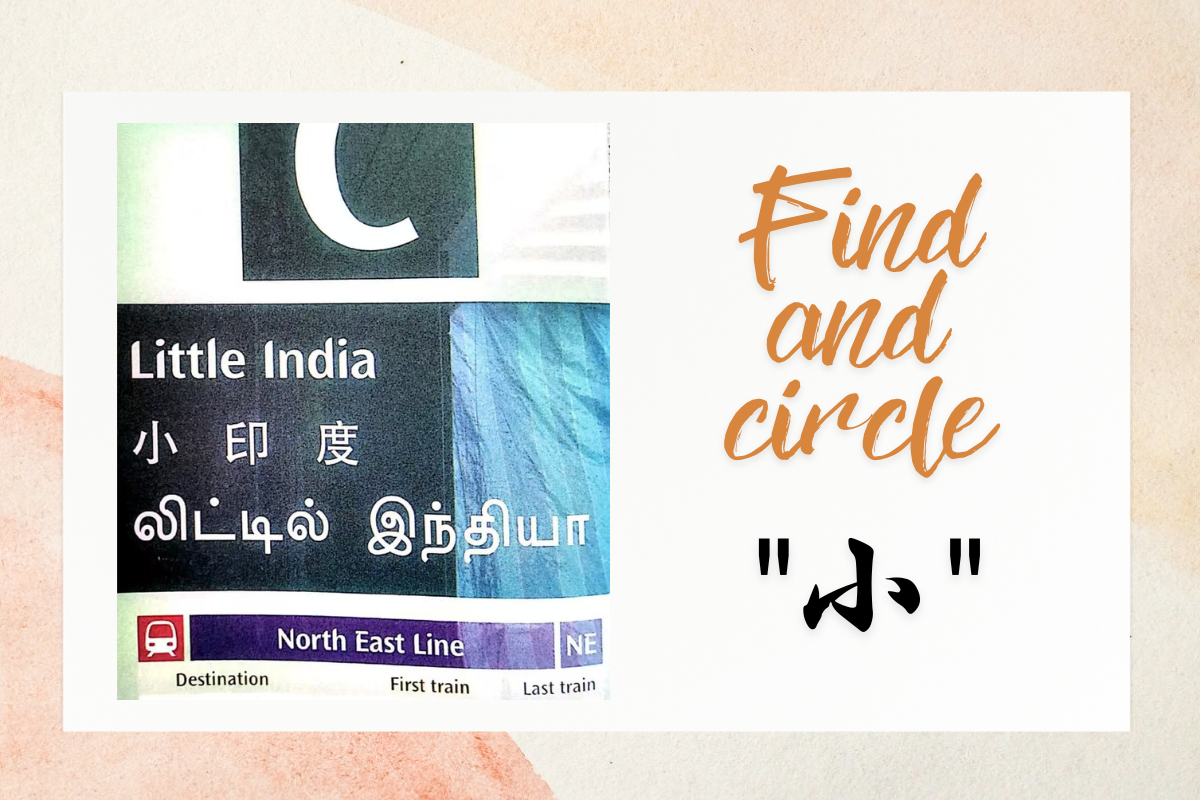
大(dà)
Explanation:
The character "大" depicts a person with arms and legs spread out, signifying a "big" appearance, which is the essence of this character.
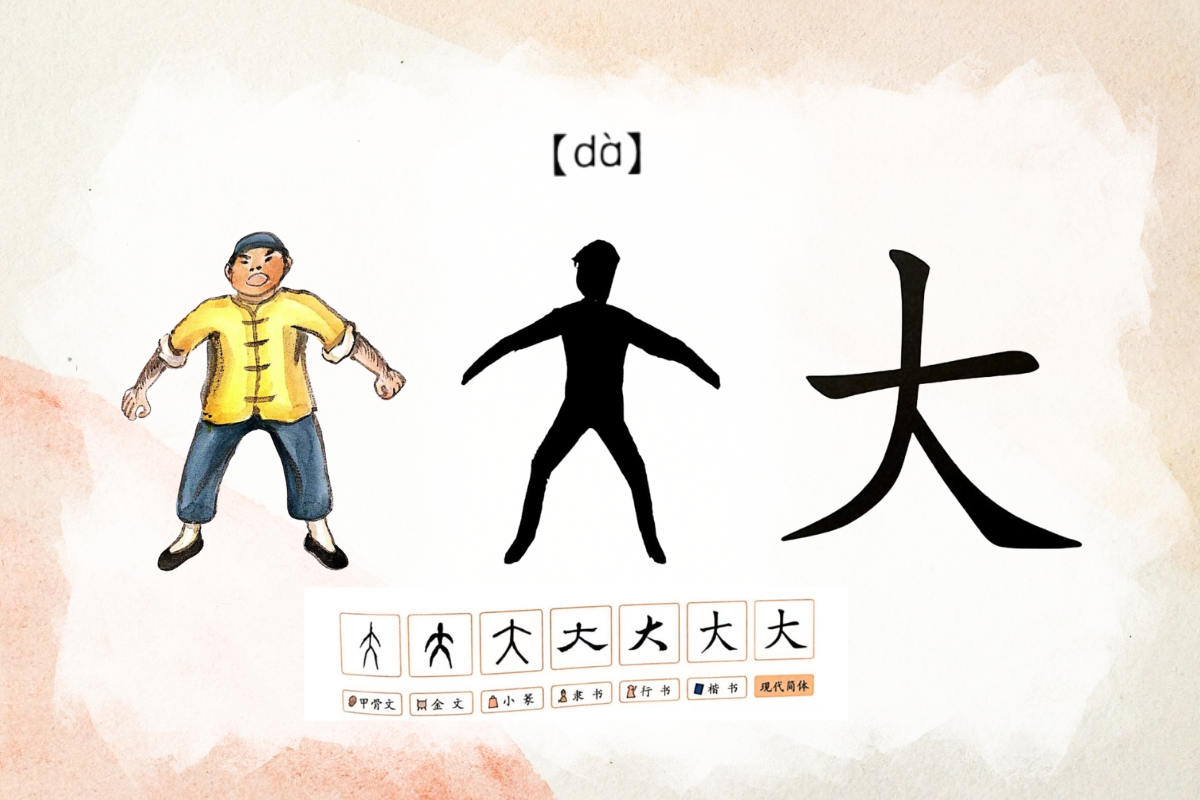
Example:
The world is big.
世界很大。
Shì jiè hěn dà.
That gentleman is very tall and big.
那位男士很高大。
Nà wèi nán shì hěn gāo dà.
Your voice is too loud!
你声音太大了!
Nǐ shēng yīn tài dà le!
Find and circle the "大" in the image:
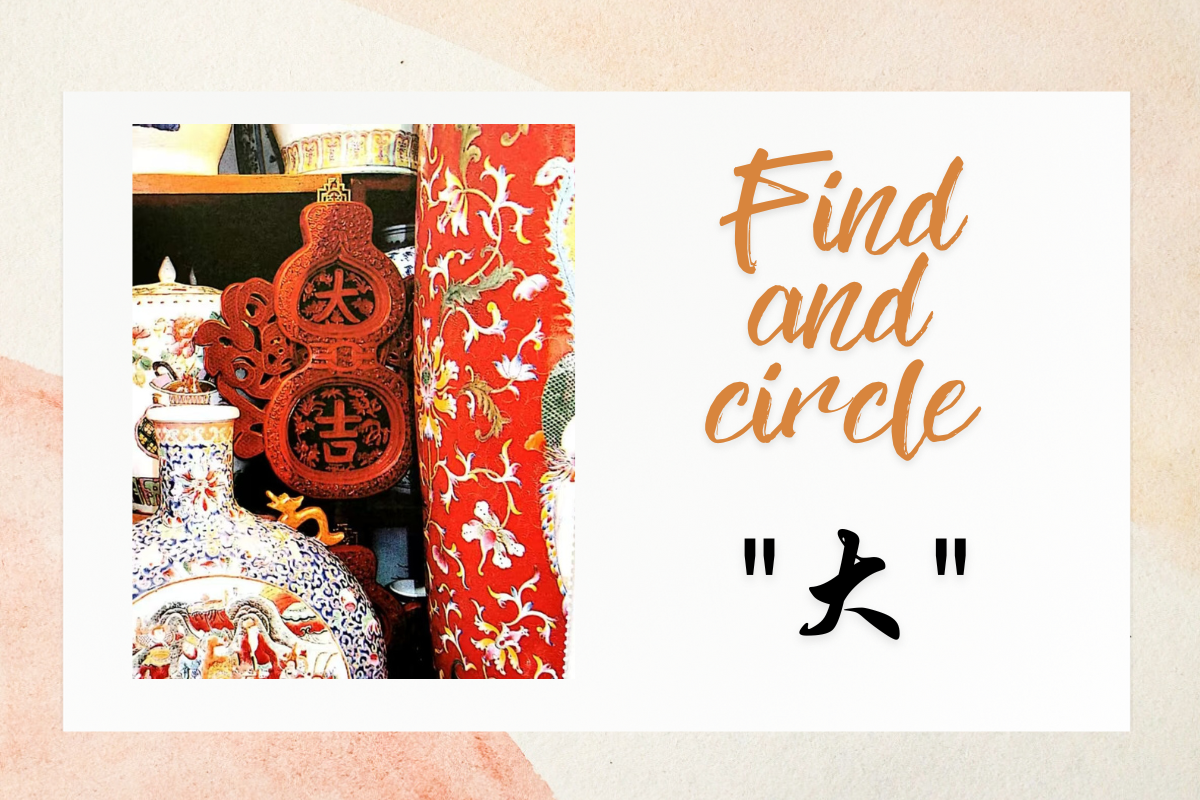
夫(fū)
Explanation:
"夫" is a pictograph depicting a man wearing a hat, representing a "grown man" and also means "husband." "夫人" (the person with the husband) is a polite term for addressing someone's wife.
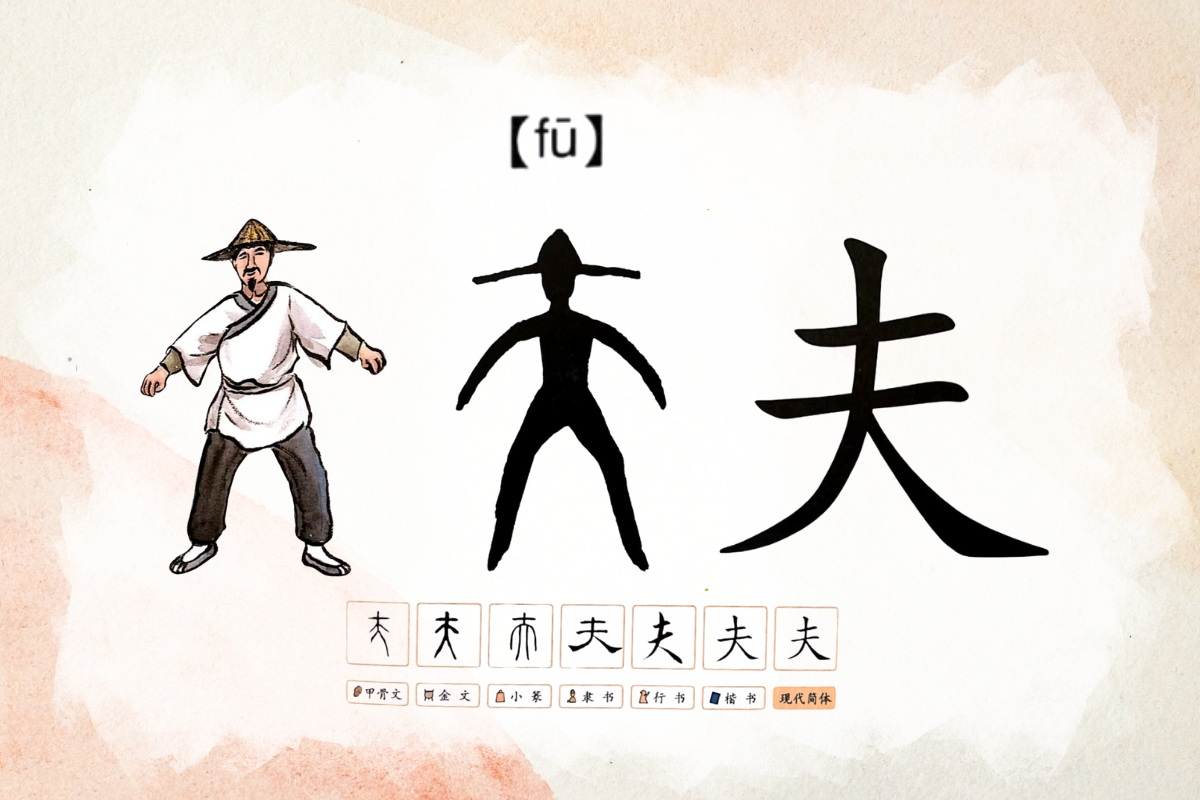
Example:
They as a couple have made significant contributions.
他们夫妇做出了巨大贡献。
Tā men fū fù zuò chū le jù dà gòng xiàn.
His wife is Mary.
他的夫人是玛丽。
Tā de fū rén shì mǎ lì.
The farmers are working in the fields.
农夫们在田里劳作。
Nóng fū men zài tián lǐ láo zuò.
Find and circle the "夫" in the image:
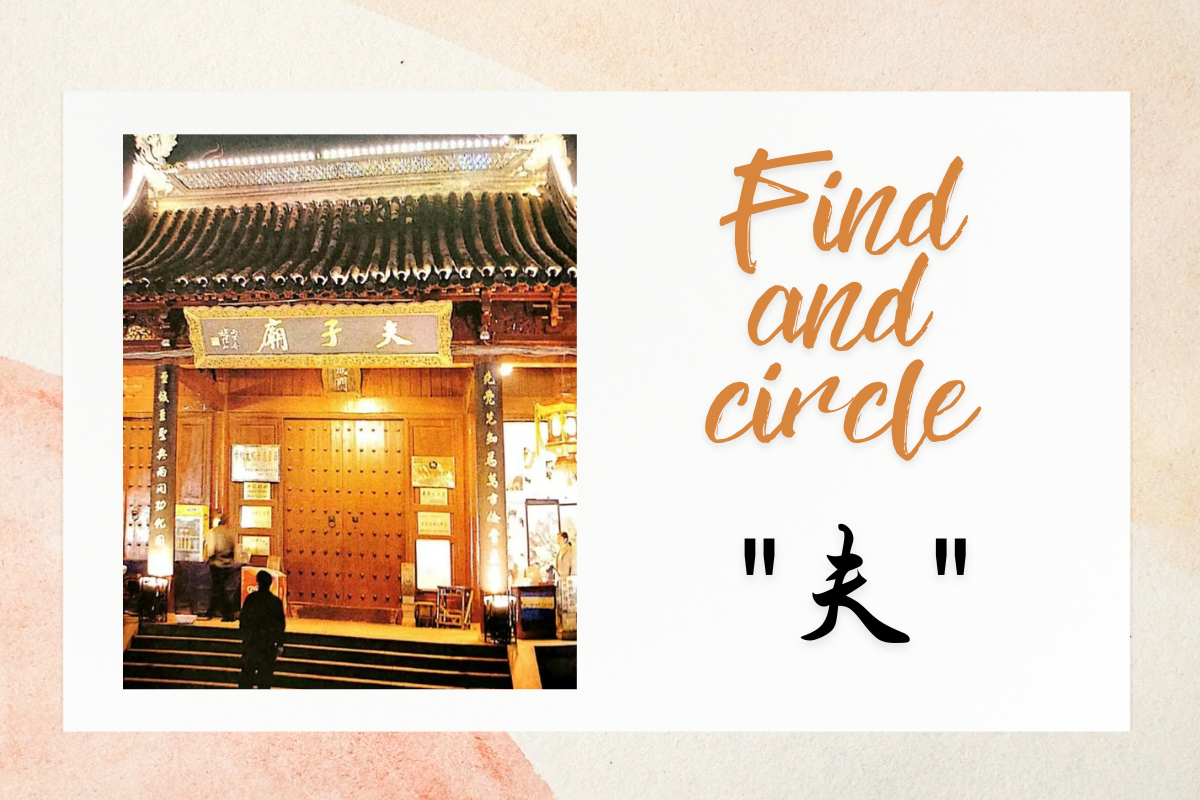
天(tiān)
Explanation:
Adding a line on top of "大" creates the character for "sky" or "heaven," forming "天." Combining "好" and "天" gives "好天," meaning "good weather." Combining "天" and "子" forms "天子" (literally "the son of heaven"), another title for the Emperor of China.
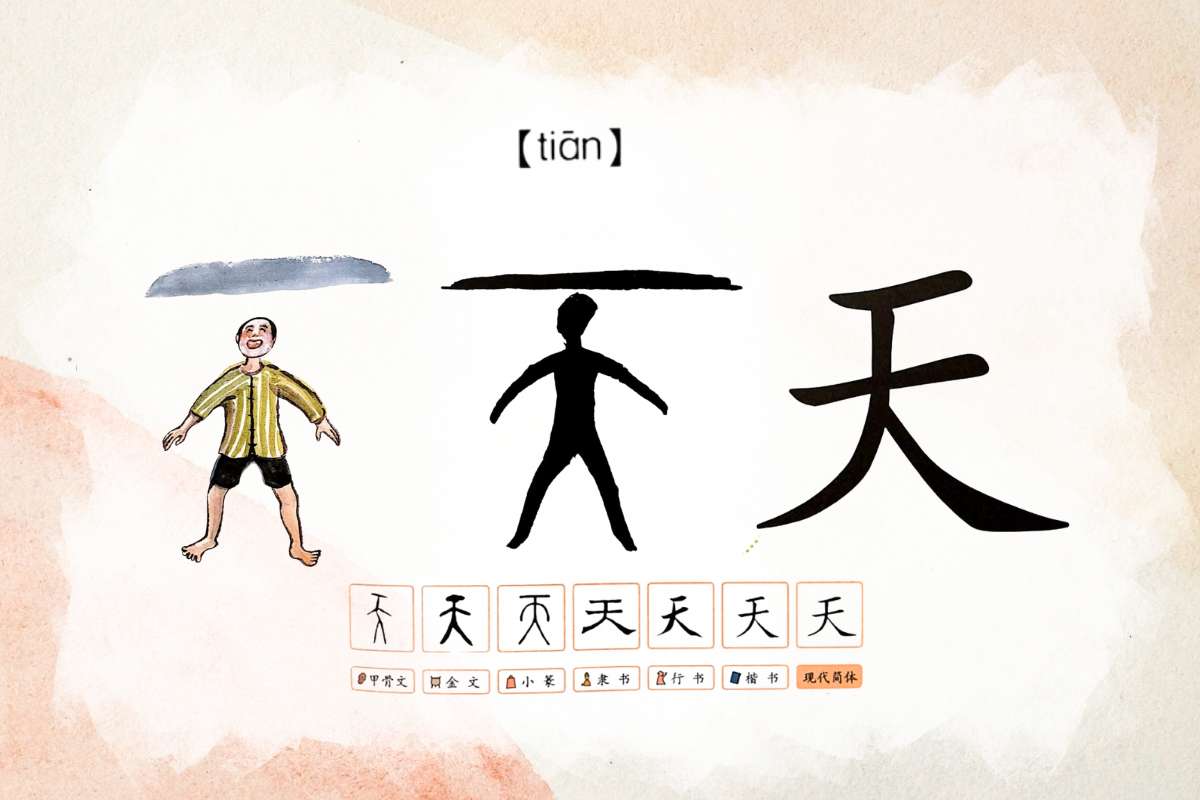
Example:
The weather is very nice!
天气很好!
Tiān qì hěn hǎo!
He is happy every day.
他每天都很开心。
Tā měi tiān dōu hěn kāi xīn.
The child grows day by day.
孩子一天天长大。
Hái zi yì tiān tiān zhǎng dà.
Find and circle the "天" in the image:

Now, when you write "小" and "大," think about how perspective changes with scale; "夫" and "天" remind you: though humanity may be small, we always look up to the stars. Chinese characters encapsulate a universe within the strokes.